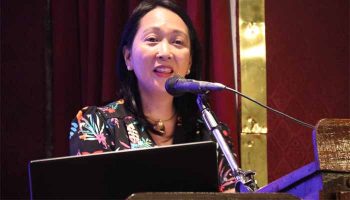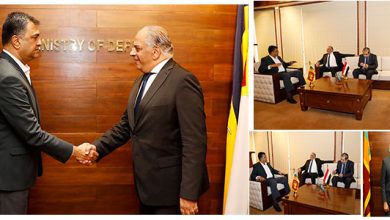Why the tripod model constituting patient-family-family doctor is still desirable globally?


MBBS PgD-FM MCGP MRCGP [INT] DipPallMed (UK)
PhD Fellow (Palliative Care, UK)
Lecturer/ Hon. Family Physician
Department of Family Medicine, Faculty of Medical Sciences,
University of Sri Jayewardenepura
Palliative Care Lead/ Coordinator
National Centre for Primary Care and Allergy Research (NCPCAR)
University of Sri Jayewardenepura
PHC Young Leader
World Health Organization (WHO)
History of General Practitioners’ involvement
From the inception of medical traditions, the doctor played a vital role in human societies. The populations sought help for medical matters from their doctor. Historically, in both eastern and western civilizations individuals and the families tended to have their own village doctor. In the Sri Lankan context, even kings such as King Buddhadasa took pride in the meritorious cause of healing the general public. The concept of a ‘family physician’, also knows as a ‘general practitioner’ (aka GP) stemmed from this traditional model. This family doctor became no less than a close relative who took care of individuals, families and the entire societies dwelling in their neighbourhood.
How general practitioners are situated in community-based care provision
Generally, the GPs in these countries reside in the communities that they serve. Each GP in these countries is assigned a catchment population from within the particular locality. Therefore, they are aware of the community, the neighborhoods, the families, their occupations, the socio-economic status of the community and the diseases that are commoner among these people. This doctor provides care to his patients and their families from ‘womb to tomb’ and sometimes over a few generations. Literally, the family doctors grow old with their communities, getting to know them better with time. The GP, in the role of a manager, operates his own clinic (also known as ‘office’ or surgery’ with several staff members assisting them. In most instances, the public would visit this clinic for their ailments. The family doctor would attend households for various situations from assisting the delivery of a baby to a moribund patient who would benefit from ‘tender loving care’.
The commitment of the WHO to provide equitable care to all and the GPs’ role
The World Health Organization (WHO) advocates towards the goal of Universal Health Coverage, whereby all citizens of a nation, regardless of their location or financial abilities have access to the basic health care needs. The involvement of primary health care professionals that includes the key role of GPs in enabling the public avail to their basic human rights is emphasized by the WHO. In the Astana declaration of 2018 as agreed among the state representatives of the WHO, five major components of primary health care have been described. 1. Promotive care encompasses activities that uplift
the health status of communities (example: health education). 2. Preventive care strives to prevent disease and its complications among the people that includes immunization. 3. Curative care aims to treat curable conditions (example: infections), 4. Rehabilitative care covers physical therapies such as physiotherapy and psychological therapies such as counselling that aims to establish normal functioning among individuals with defined conditions. Finally, 5. palliative care, that aims to alleviate suffering and improve the quality of life among patients diagnosed with life-limiting illnesses and their families through a combination of physical, psychosocial and spiritual measures.
Through its evolution, subsets of allopathic (Western) medical professionals split into specialties and further subspecialties. Importantly, the global health systems that are renowned for equity and quality of health care such as the USA, Canada, Australia, the UK and most European regions have maintained the specialty of Family Medicine or General Practice as the core of the healthcare system. In most countries, the public health insurance schemes cover the costs of medical care provided by these GPs, so that no out-of-pocket expense is incurred to the public for their basic health needs.
Clinical competencies of a General Practitioner
Essentially, by training the family physicians are supposed to possess a broad knowledge and skillsets to be able to provide solutions to as many issues that people present with across many domains; physical, psychological and social. These doctors must address issues of children to those of the elderly. Similarly, they could not turn their backs on patients who need pre-pregnancy, pregnancy and post-delivery care, ear problems, eye problems, women’s and men’s health issues, hormonal conditions such as diabetes, neurological issues such as fits, muscular and skeletal issues such as different forms of arthritis and so on. Management of medical and surgical emergencies, administration of vaccinations, attending to minor surgeries and provision of palliative care to those diagnosed with life-limiting illnesses are also some other competencies that a general practitioner must be geared with.
A GP could also be an ‘opportunist’. But not in a bad way. When you consult the GP with a foot ulcer, she will examine your legs for evidence of varicose ulcers and test your sugar levels etc. as part of diagnostic procedure. But in addition, she might check your blood pressure levels to see whether it is under control, which may be less relevant to the foot ulcer problem. This is called opportunistic health promotion. A family doctor while visiting a cancer patient in the community noticing a sanitary issue in the household and advising to correct it may also constitute this form of health promotion.
Social competencies and soft-skills of a General Practitioner
In addition to the clinical competencies, a successful GP is equipped with soft skill sets such as communication skills. This doctor is capable of comprehending well the patients’ untold sentiments even through non-verbal cues and create a positive impact on their behaviours and lifestyles. An example would be an instance where a GP dives into the mind of a person and carries out smoking cessation counselling to remedy his addiction problem. Thus, a GP invariably makes a sociologist. Being the first care contact point for persons with diverse complaints, they possess an outstanding sense of human psychology, illness behaviours, ethical and legal imperatives and so on. It has been shown in international social science literature that populations who have a family doctor of their own, tend to be happier in terms of the care they receive. GPs tend to spend more time with their patients, discussing the pros and cons of therapeutic options with the patients and families, thus encouraging well-informed shared decision making. This model contrasts with the hospital-based paternalistic decision-making tradition. While the hospital clinicians mostly adopt a disease-centred management approach, the GPs follow a patient-centred approach where the patient’s concerns over the illness are given prominent consideration over the disease itself. In philosophical terms, the family doctor sees ‘the patient who has the disease and tries to help them’, whereas the hospital doctor sees ‘the disease the patient has and tries to cure the disease’.
Coordination of social resources
People seek medical care and advice from the GP for their day-to-day illnesses. In most instances, the GP has the complete solution for their problems. By their training, family physicians are accustomed to looking at the broader picture of the person presenting with an illness. In addition to the physical complaints that the patient presents with, the doctor explores the associated psychosocial issues that are inextricably linked to these ailments. For instance, an elderly wife may suffer depression following her husband being diagnosed with cancer or a single father might find it hard to cope with work commitments when his child falls ill. Because family physicians have formed a long-standing therapeutic relationship and an understanding the families well, they are in a better position to help their populations. These doctors are also aware about the social, community and professional resource personnel and organizations that exist in the society. They coordinate between these services and make them available to the persons in the community in need as appropriate.
Coordination of care with specialists and other professionals
When your family doctor does not have a complete solution to your problem. When the depth into the speciality required to resolve the problem surpasses her expertise, she would refer you to a different professional for further care and advice. For instance, referral to the specialists for specific illness episodes [example: to an ENT surgeon for refractory middle ear infection that does not respond to preliminary forms of treatment]. Once the episode is resolved, you return to your family physician, and she provides seamless care to you over your lifetime while making appropriate referrals to other professionals if and when the need arises. In instances such as pregnancy, your care will be delivered in a coordinated fashion between the family physician and the obstetrician.
Providing seamless care and maintaining your medical record
General practitioners maintain medical records of all the clientele they take care of. These record forms a comprehensive and continuous account of all medically important details and events of a patient’s life. In addition to the management carried out by the general practitioner, it also carries the care provided by different specialists in various episodes. A family tree that is routinely incorporated into this record illustrates how the family members are linked up, along with their genetic predispositions for diseases. This enables the doctor to forecast the otherwise well family members who are susceptible for certain inherited diseases. This detailed report is not only of use to the GP, but to other specialists and hospitals that would care for your variable illness episodes.
The situation in Sri Lanka
Traditionally, Sri Lanka has also had a system of GPs. A GP essentially needs to be competent in this specific ‘artsy’ discipline of medicine in terms of the broad knowledge, clinical and social skills through their postgraduate training. In Sri Lanka, the full-time GPs and those with postgraduate qualifications in general practice are quite rare. Therefore, the quality and standards of care received by the patients could be arguable. Unfortunately, while the developed nations have policies to engage more doctors in general practice postgraduate training each year, the number of GPs produced in Sri Lanka is astoundingly low.
Nevertheless, regardless of the postgraduate training, the doctors involved with primary care are distributed island wide and tender their service at a nominal professional charge, thus benefitting the most remote of communities. It is observed that in more rural settings, the bonding the doctor forms with the community is stronger when compared to the urban settings. In relation to the quantitative health indices such as basic immunization coverage, maternal mortality rate etc., Sri Lanka tops the South Asian region. However, the qualitative evidence of the quality of health care such as patient satisfaction with the level of care they receive, are lacking in the country. Notably, people tend to pay more out-of-pocket and travel longer distances to consult specialists for the most trivial of health ailments. This is sometimes termed, ‘doctor shopping’. Despite the considerably high costs incurred to the patient, these consultations are short-lasting owing to the time constraints of the specialists. This trend not only proves unjust utilization of scarce health care resources (example: the involvement of at ENT surgeon to treat a simple viral sore throat), but also forms a barrier to achieve equitable healthcare to all as envisaged by the WHO.
Therefore, in my opinion, there needs to be a single standardized postgraduate programme (as opposed to the many we have at present), to train the graduate doctors into competent GPs. The GPs must be integrated into the respective communities on a full-time basis, rather than part-time. Global evidence has repeatedly demonstrated that GPs are able to build healthier and happier communities. There also needs to be a change in the policies, where access to basic healthcare needs from a family physician is subsidized through the state health system so that such encounters incur no to minimal expenses to the patients. It is a sort of upstream swim to achieve these goals in Sri Lanka, however, a worthy cause that could potentially improve the quality of health care that all citizens are entitled to.






